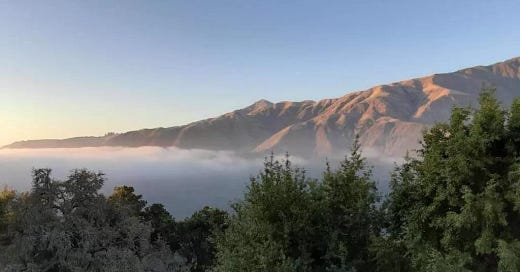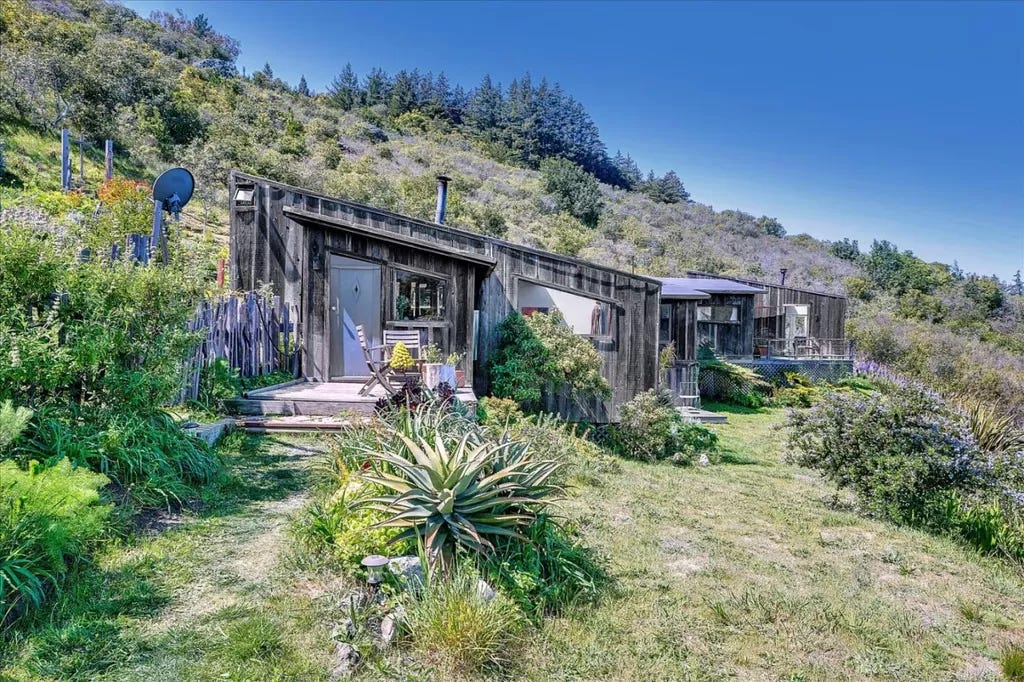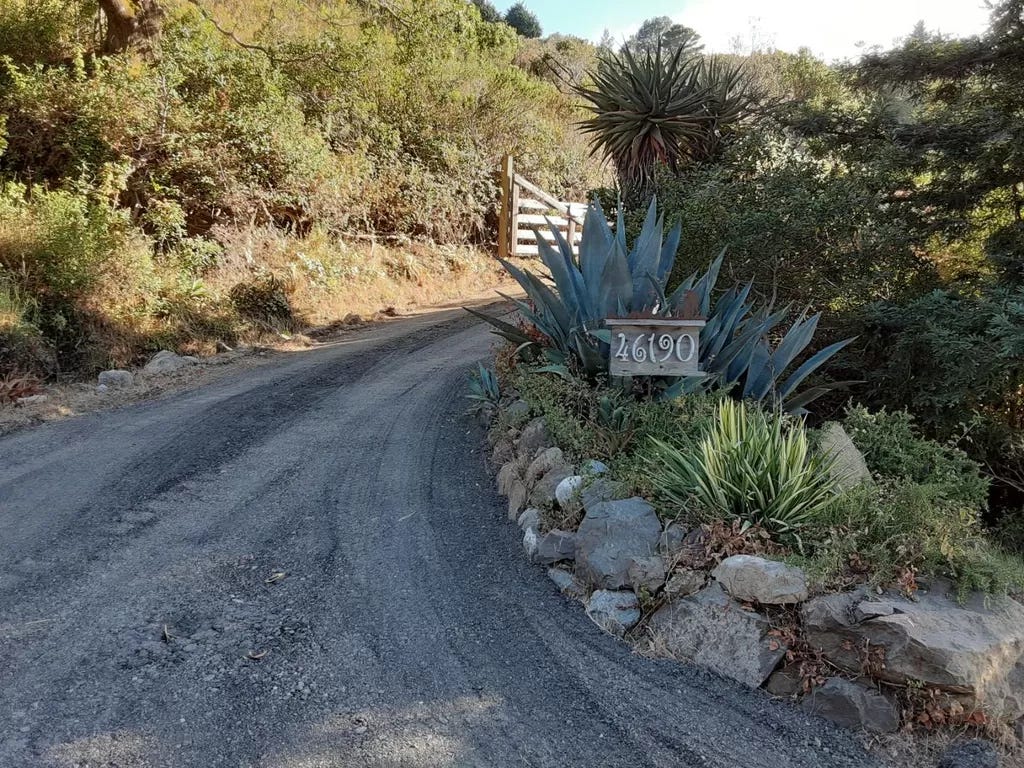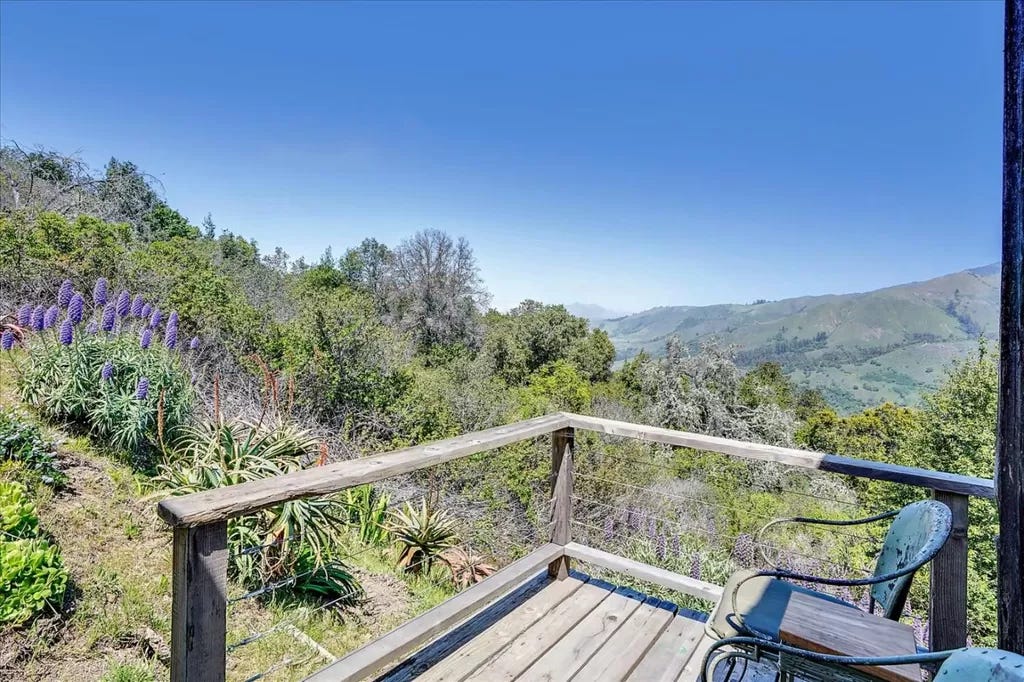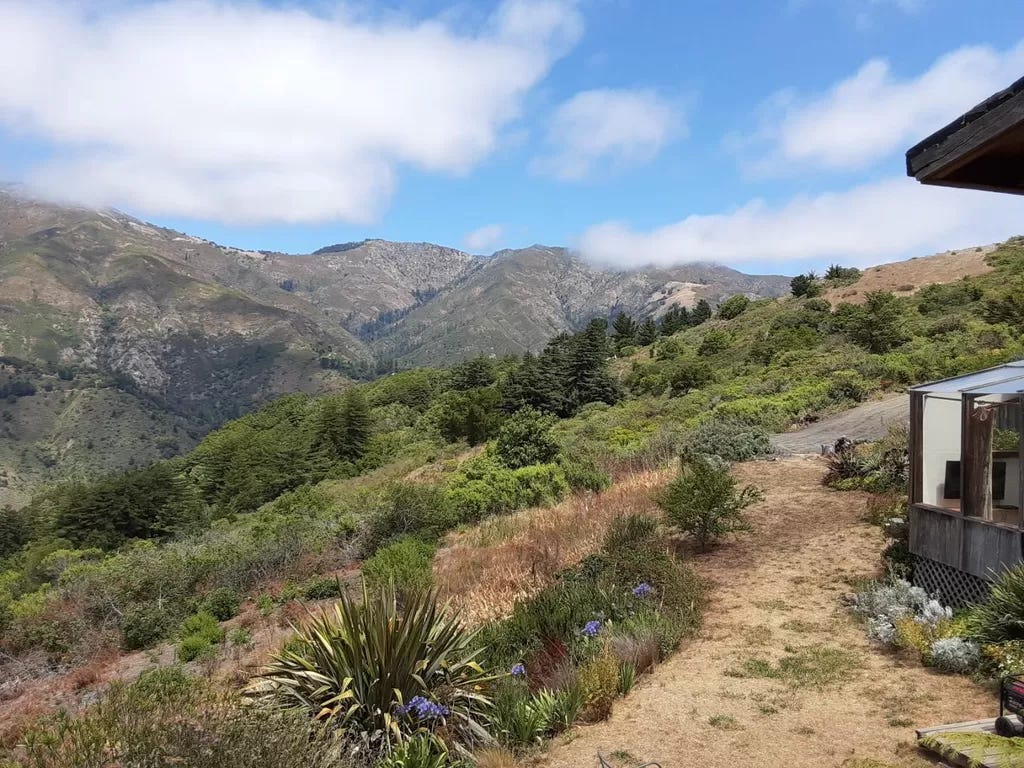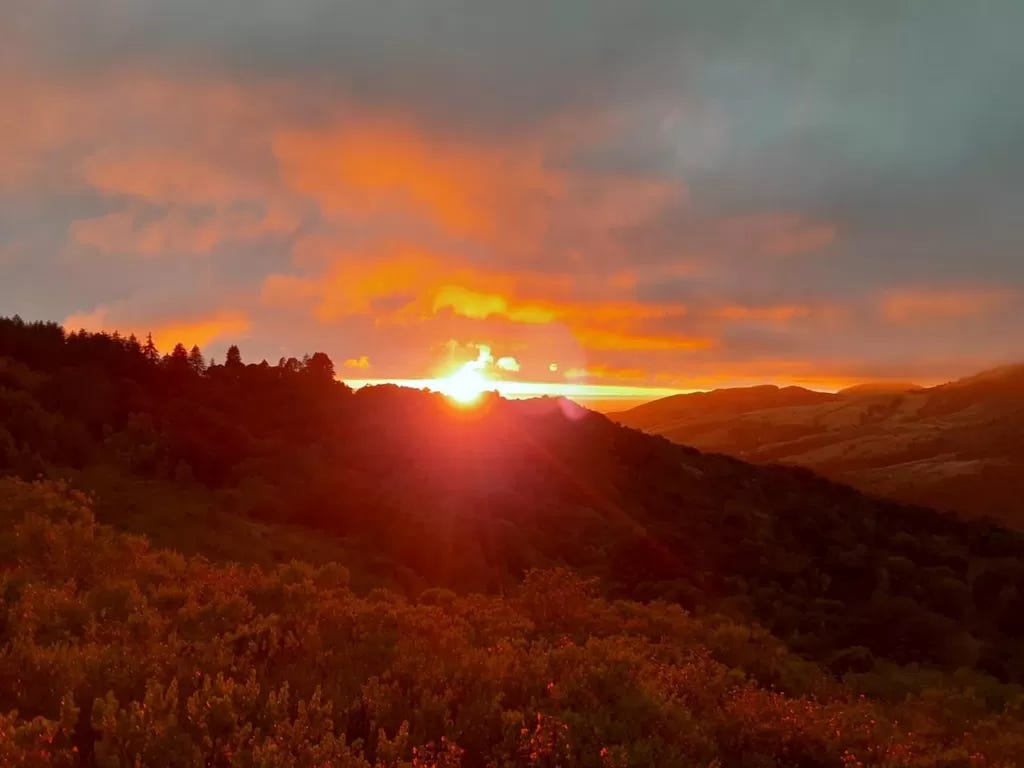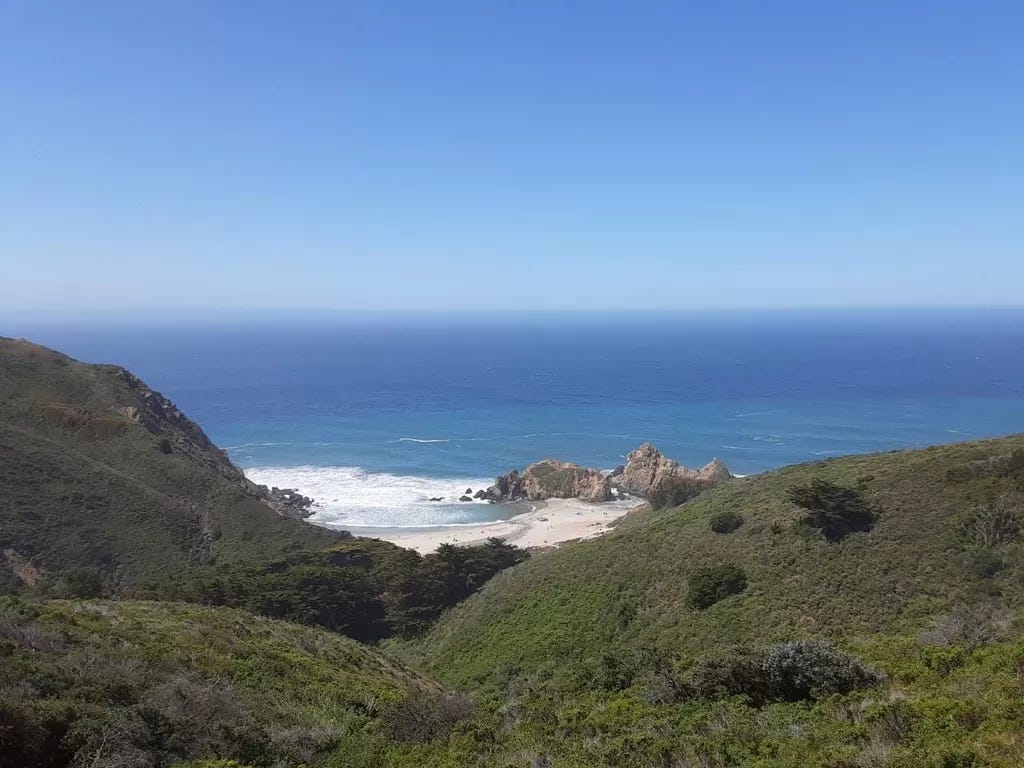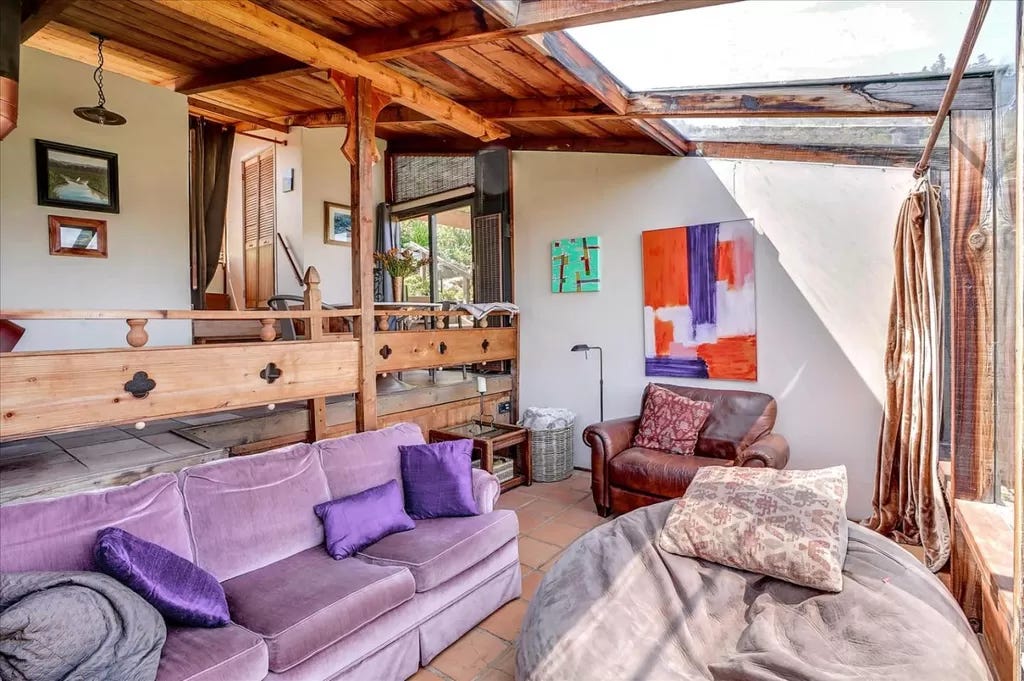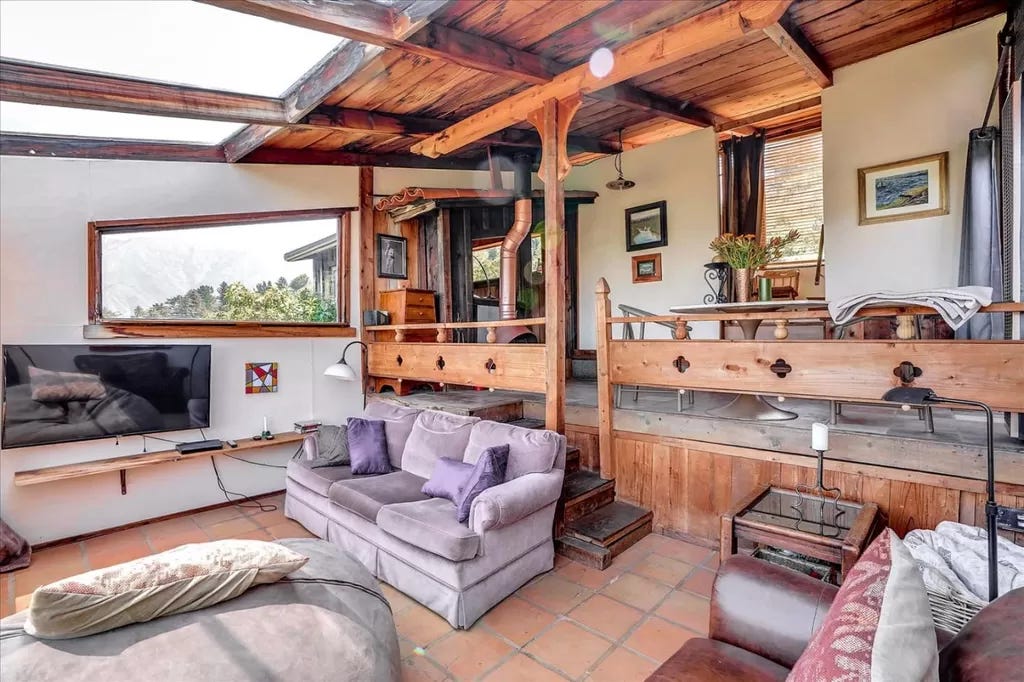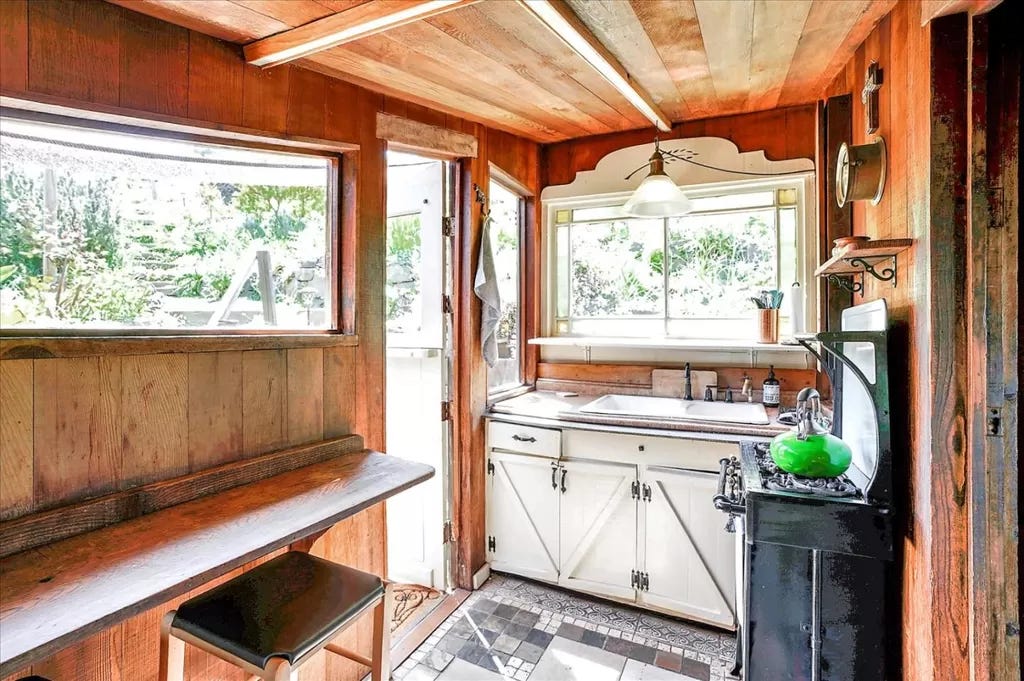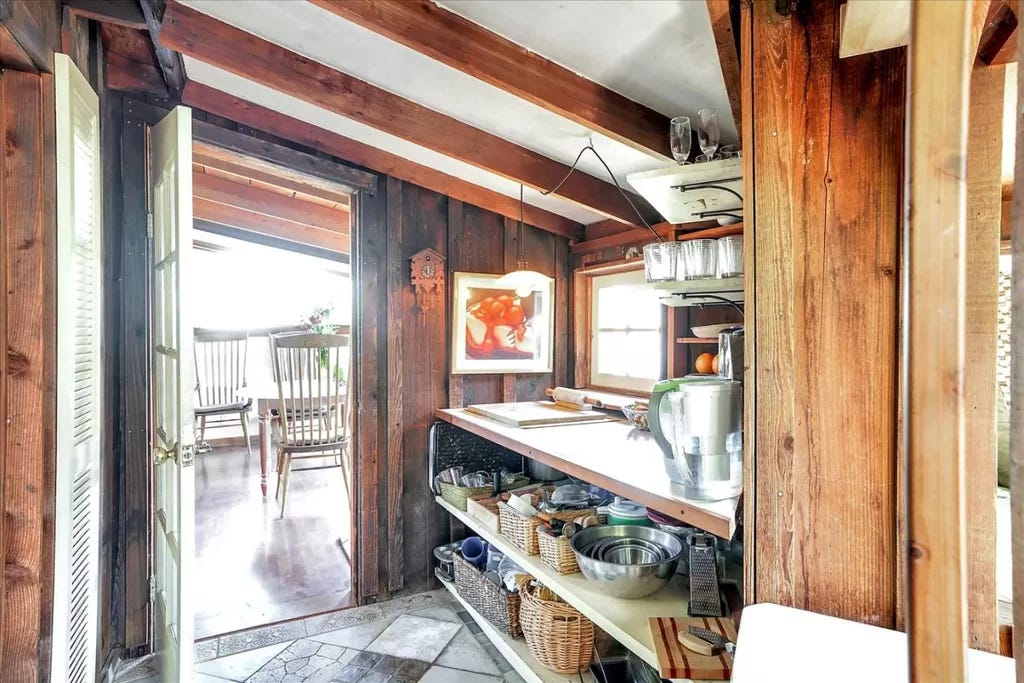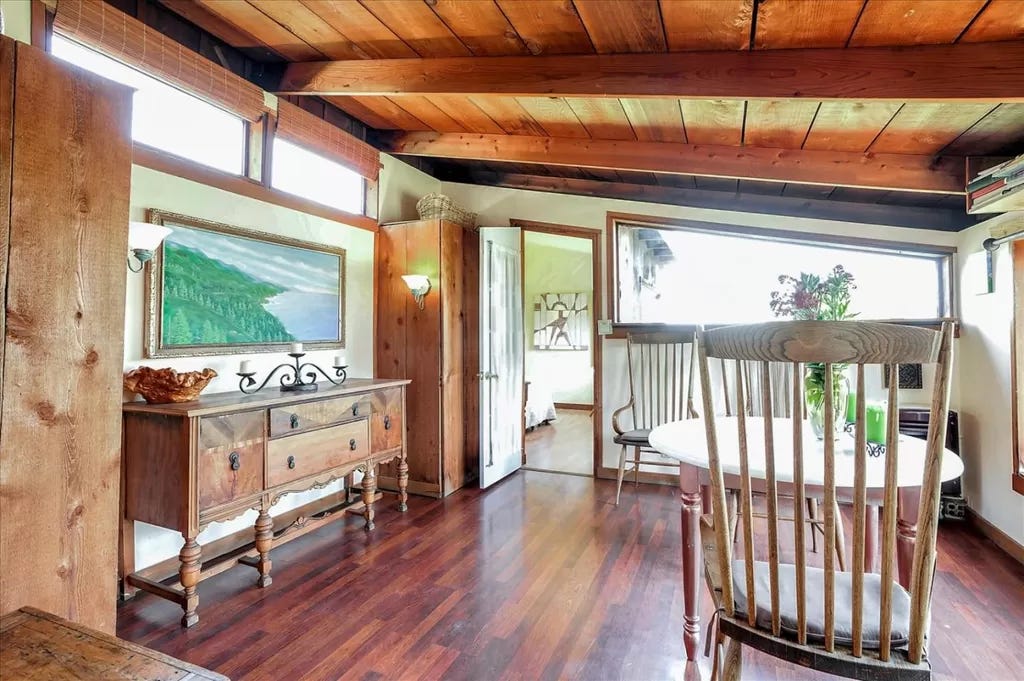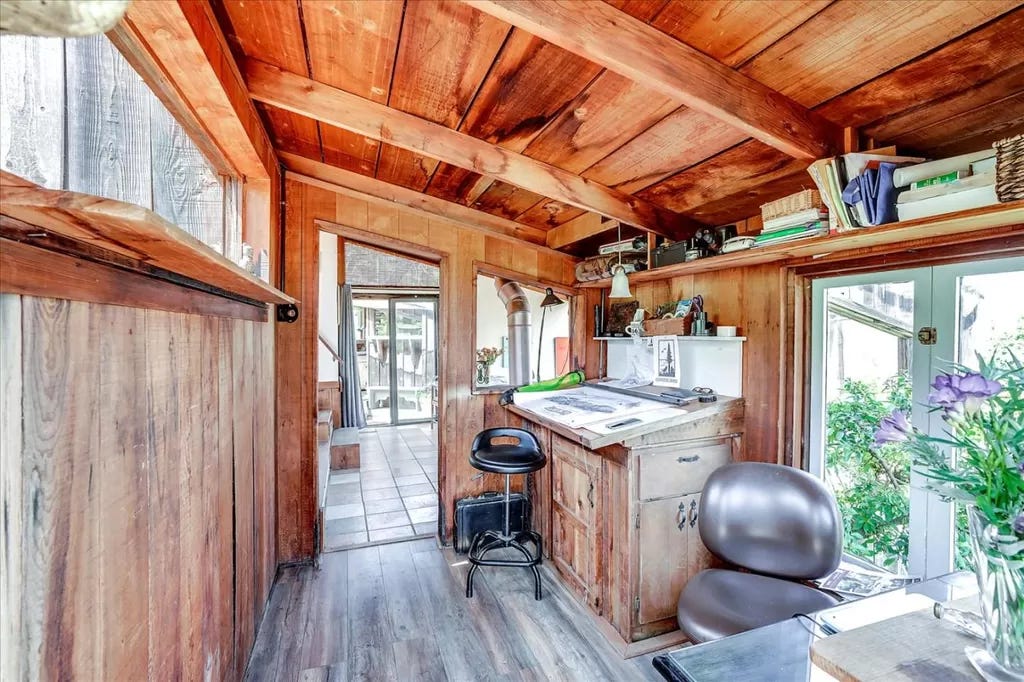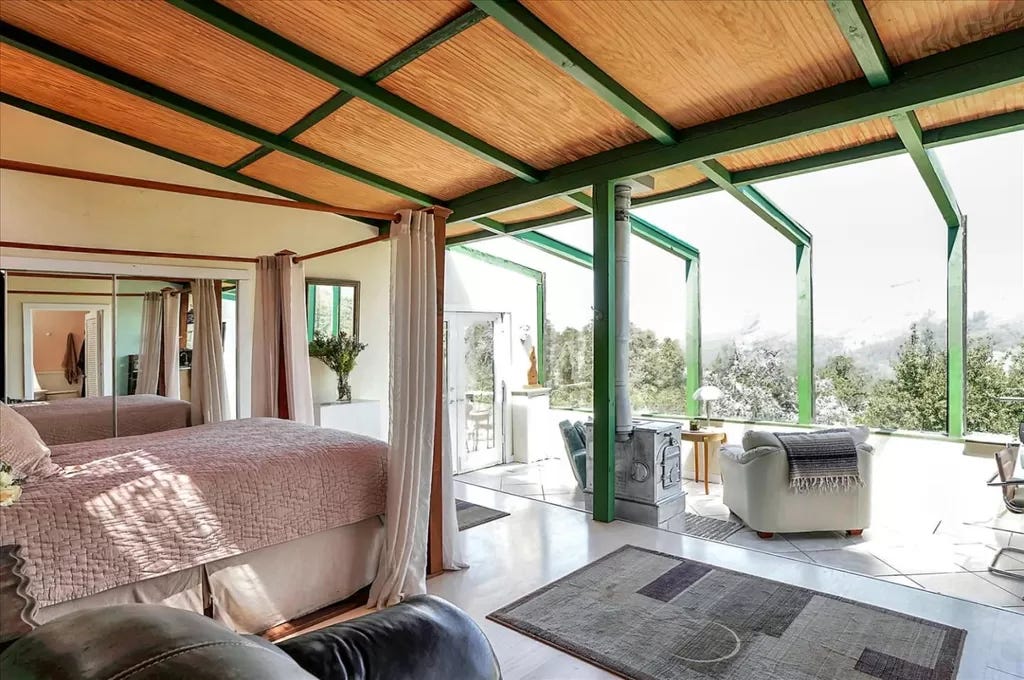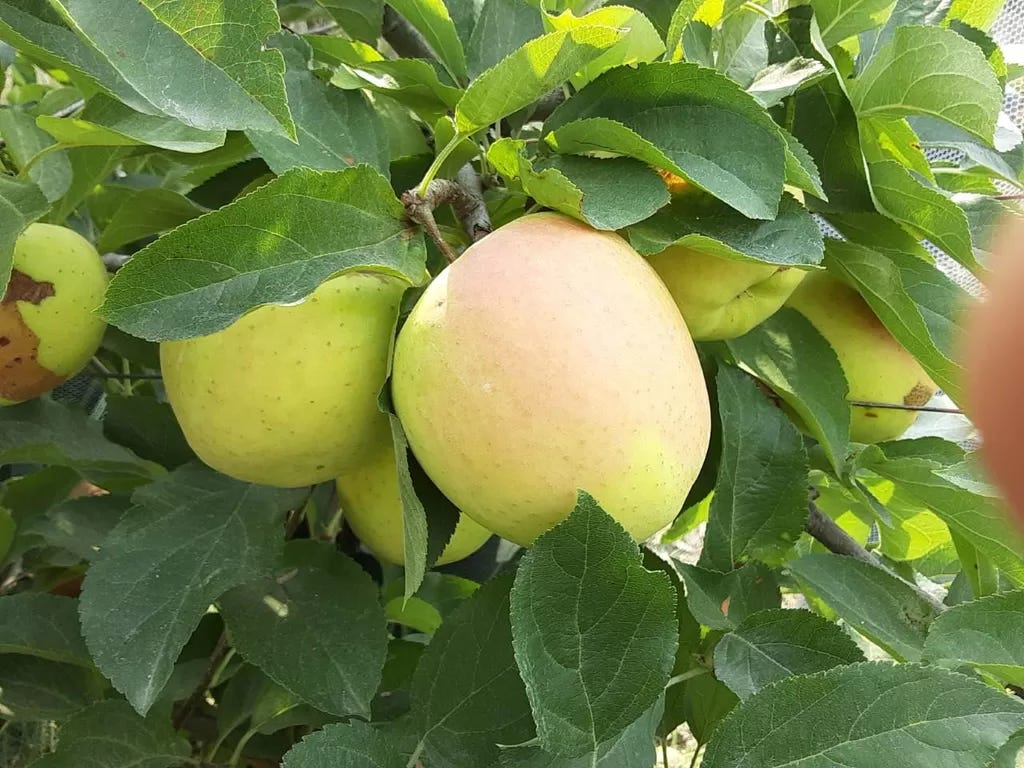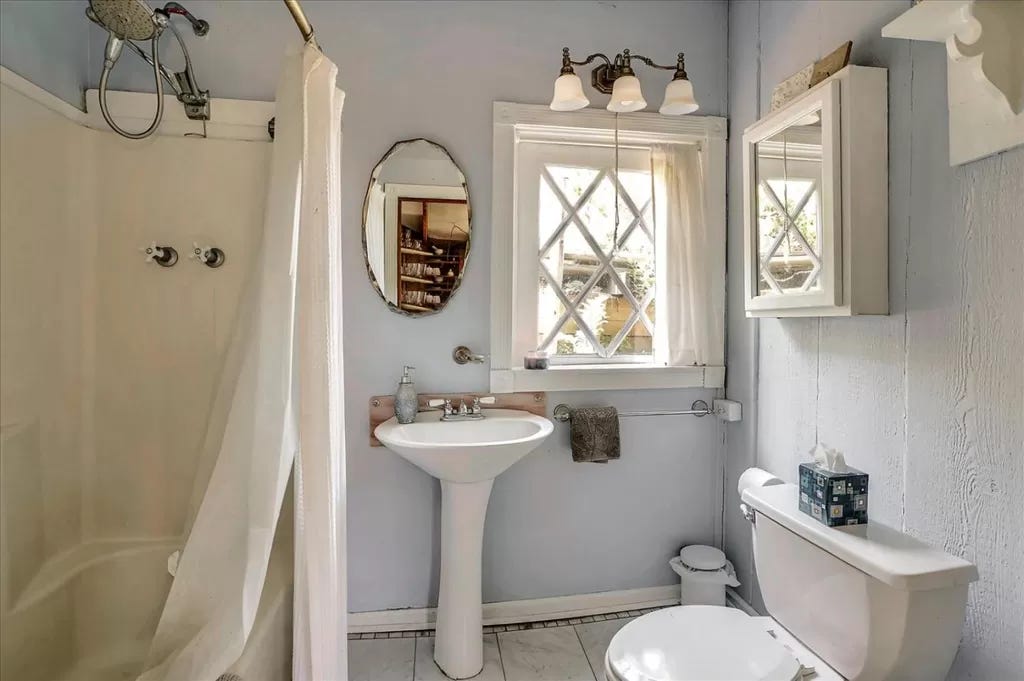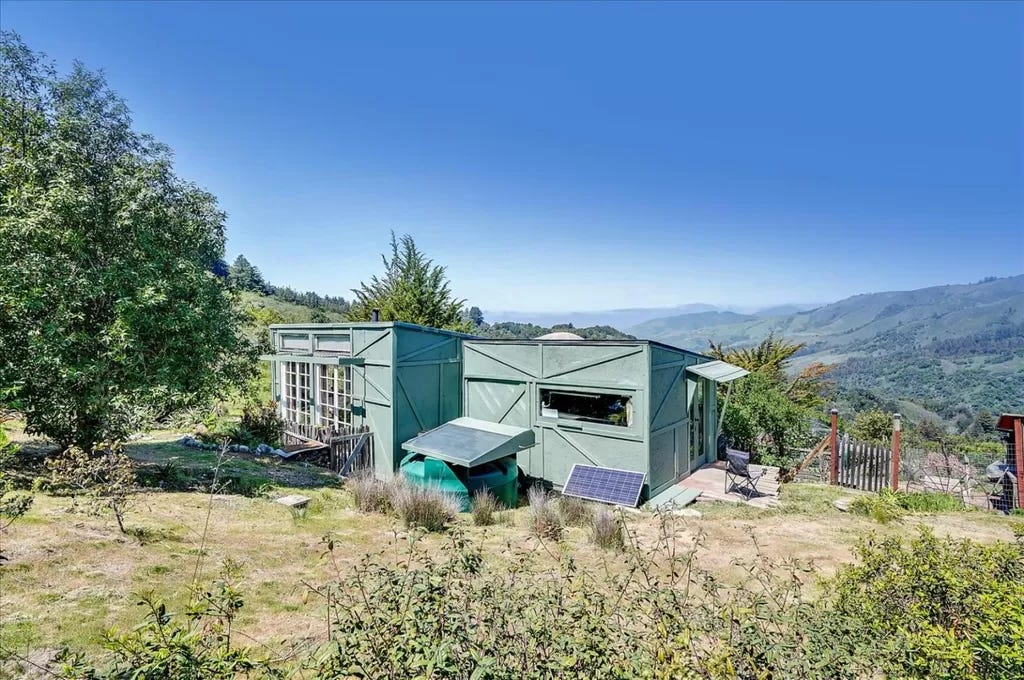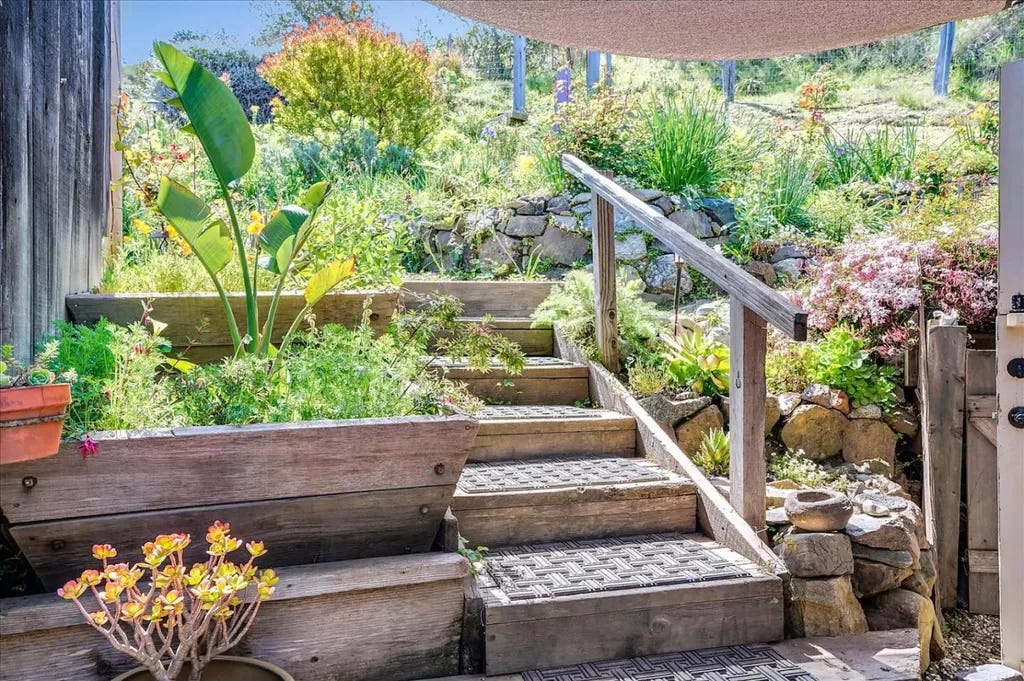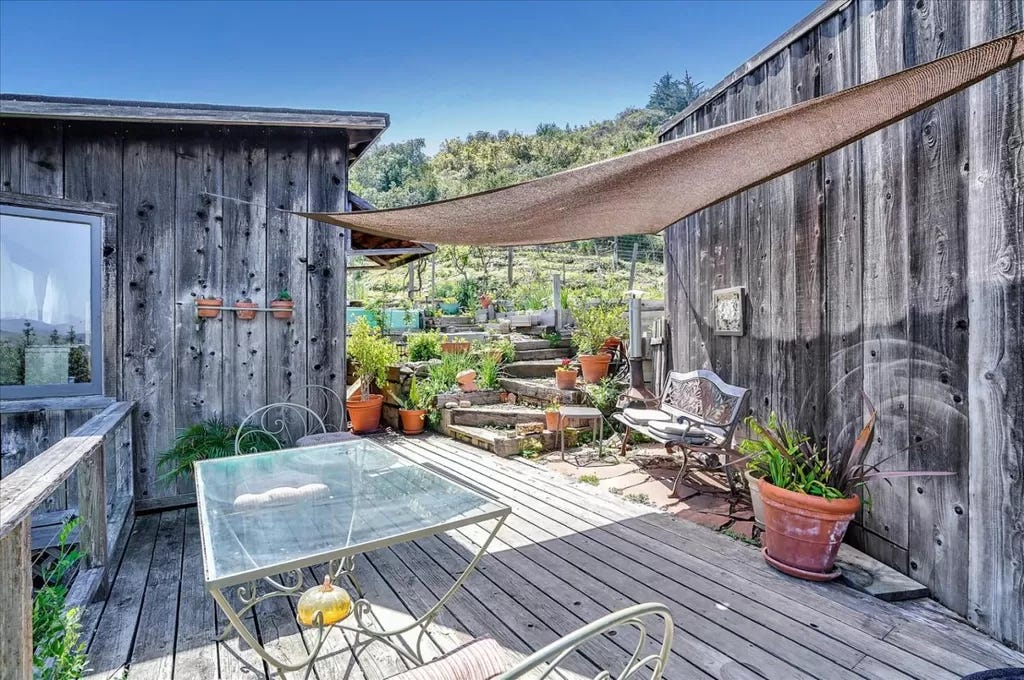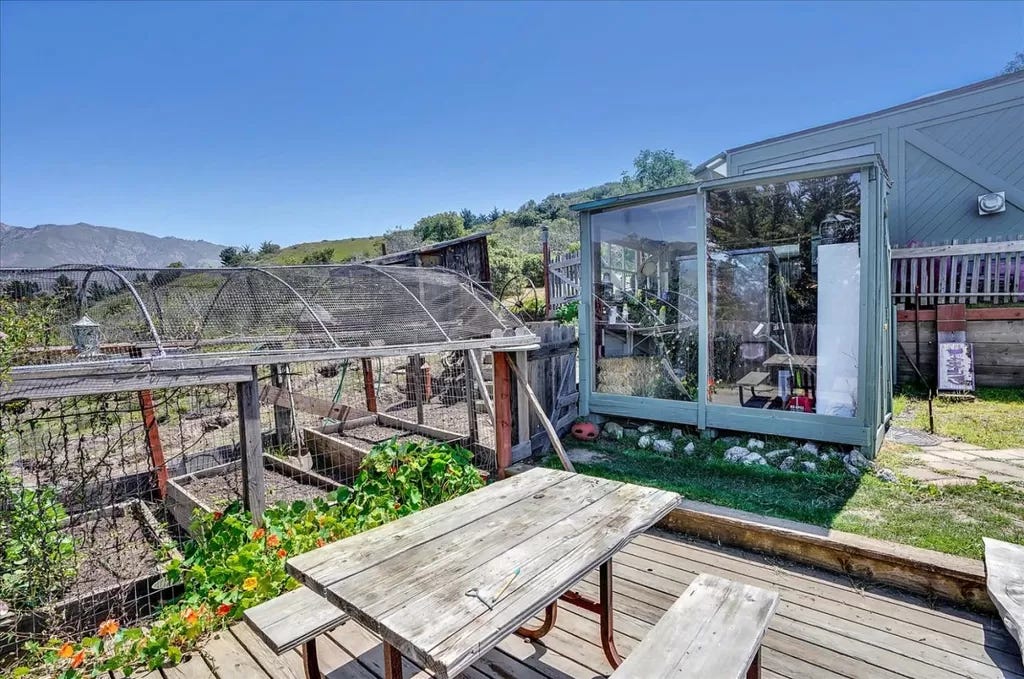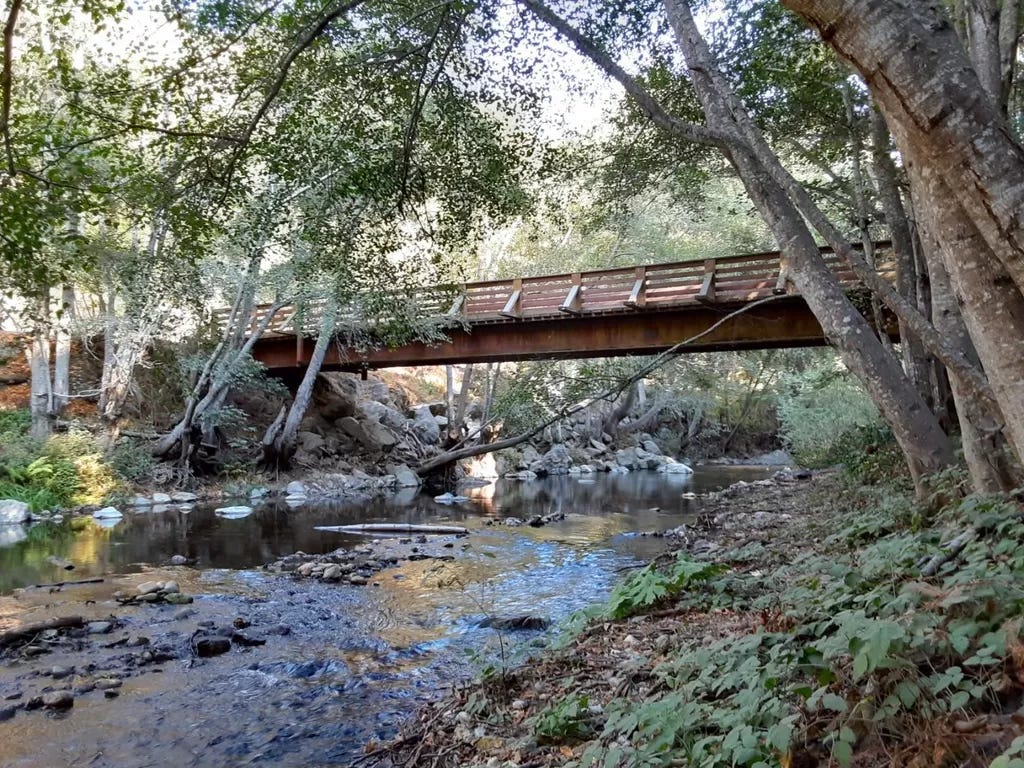This Place in Big Sur is Trying Super Hard
Five acres, a citrus orchard, and a pile of gray drifwood and single-pained windows... sounds—perfect
Midday yesterday, my son had a picnic lunch date out at Spooner’s Cove. For the uninitiated, the little inlet is at exactly the midway point on the California coast between Baja and Vancouver, BC.
It's there in the fall you can post up on a hillside plateau and watch the whales go south. And it’s also there in mid-February where you can walk out on a little cliffside trail and see the long-lensed surf paparazzi shoot a little couple of the world's best wet-suit-clad men or women, famous in certain circles, take on the churn and spit of thirty-foot waves.
It’s a spot locals don’t speak of much. Even me writing a little item like this would be frowned on.
It’s not exactly like the Lunada Bay boys out there. Still, if you go take a seat at the nearby Sweet Springs Tavern, chances are after the second or third round, you’ll hear the story of when Kelly Slater, the Michael Jordan of the sport, stepped onto our shores, caught a few sets with the locals and then before he went back to his manufactured wave in the valley, came back to his car to find all four tires slashed. The point of the story being, if we can fuck with the GOAT, think of what’ll happen to you.
But that’s all petty posturing, right? Here on Earth in an era where Hot ______ Summer morphed into ennui and just taking a number and waiting for the next set (disaster) to roll in. There is solace in watching the sparsely populated beach, even in the dead of a weekday summer, and the steady ebb of “ankle biter” waves nip across the shore.
Yesterday, I brought a flannel for my little boy because it didn’t quite warm up all the way, and to be outside, in the middle of California, in the middle of July, when the rest of the state and region is literally apocalyptically raining pieces of charcoal bark from the remains of 300-year old Jeffrey pine as if it were a final scene in an Avengers movie—well, it’s something to feel so normal that you aren’t scared.
We toured the Spooner Ranch House. It was there I caught a glimpse of the kid who I missed most for the last eighteen months. So much of the very adult conversations he’s been a part of, or at least on the periphery, are about all this doom and gloom. But there he was in this empty ranch house built in 1892, being a little kid.
As he toured the place and participated in a little scavenger hunt among the full-sized diorama detritus of a simpler life, I imagined a life where this place was scraped down, where Rancho Cañada de Los Osos y Pecho y Islay—originally a 34,000-acre Mexican land grant—that eventually landed in the hands of Alden Spooner, Jr. and his three sons planted grains and beans, operated a dairy, and raised livestock. The land was subleased to Japanese pea farmers in the ‘20s (residents—we should note—who were taken away in World War II. Even so, several of the descendants' families still live here today.)
…And in the early 40s, area residents petitioned the state to purchase the land, and it did, turning it into one of California’s true gems in 1946. If not for the diving catch of preservation, the views I took in would be gazing out at condos, and strip malls, and a business park.
Instead, my son got to run around the original farmhouse with his little friends and be a kid again, full of wonder and fake sadness because they “didn’t have a TV or an iPad." In one room, the Spooner kids’ bedroom, he paused at this antique doll collection that allegedly did belong to the original owners. He called his friend over and pointed down.
“Gross,” he said as he gestured toward some VERY human-looking doll hair.
“It’s just hair,” she said, “What’s gross?”
“What’s grosser than hair?” his reply.
And she laughed and he laughed—and they laughed together loud and with sincerity. It echoed off the big squeaky floorboards and throughout the rickety old whitewashed seaside structure.
We ended up outside, rambling around the trails for a bit. We saw a family of doves, a mamma, and a daddy, and eight tiny charges no bigger than salt shakers darting in and out of the poison oak.
A new turkey vulture was literally shoved out of its nest; it flew (fell?) gracefully for a moment then collapsed its wings and hit a branch and then the tree trunk before landing with a poof on the soft dirt below—dazed and squawking for its mama shoulders stopped and watching from above.
A mama deer and her fawn bounced up an impossible slope to safety after coming down to the deserted campground for water coming off a dripping spigot.
I looked at my own little one, happy, gliding, gesturing with his hands, and for a moment (just a moment), all the bad stuff here, banging down our front door, out to get me, determined to find him, seemed to recede with the outgoing tide.
46190 Clear Ridge Road Big Sur, CA 93920
Were you to read the parachute journalism thinkpieces, you’d be convinced that California is emptier than a pizza box.
It's true, 180,000 residents have made haste for different states, cheaper living for suburban mom Mormon preppers in Idaho, tax shelters for tech bros in Nevada and Texas. And overall safety in the not-yet-boiled-over Midwest and Northeast.
A hundred and eighty thousand people in a year, indeed, is a lot. A whole midsized city, think Glendale or Santa Rosa, packing up their SUVs and getting gone, out for bigger lots and greener (or at least less on fire) pastures.
Good riddance, I say. Don’t let the door hit you and all that.
And it’s not a point of exceptionalism that this fifth-generation (on one side at least) California native says that. Whatever. I get it.
For every $500 Patti Smith concert ticket at the Henry Miller Library this fall in Big Sur, there’s the unrelenting burden of living in a state that should be a country that acts like a small town and that taxes its residents like the church.
We couldn’t get in our own way more, and yet, somehow, the best in the world still come here to get educated and go to work.
The ocean is still ours, and the mountains, and the snow—for now at least. Giant sheer granite cliffs loom over us, more arrogant than any skyscraper. We’ve done our best to pave over some of the truly finest natural lands the world has ever known and leave the stench of commerce and the patriarchal death warble yelling at the glitchy Bluetooth in the cockpit of a Tesla stagnant in the HOV lane along with it.
But you’re gonna tell me it’s better out there? More survivable? Maybe. But better? Not now, not ever.
This place in Big Sur is a survivor’s homestead designed and built by longtime Big Sur denizen, artist-writer-designer-lucky SOB whose name sounds like a great young adult fiction villain Reed Cripe.
Cripe was a protege of the recently departed famed Big Sur architect Mickey Meunnig—who designed the Post Ranch Inn, as well as the Baths at Esalen and the Hawthorne Gallery.
Meunnig's designs are called whimsical and all that, but really, they have an unfinished openness to them. It's as if they're all neatly arranged piles of driftwood waiting for the inevitable tide to take them back out from shore.
The bleached-out redwood and glass facade includes a separate artists’ studio and slumbers unassuming on five acres complete with botanical gardens and a mature fruit orchard with apple, pear, plum, and peach—for all your pie needs.
Live on (off) the grid here for the price of a 3,000-square-foot tract home in Irvine. It may not last forever, but nothing this good does.
